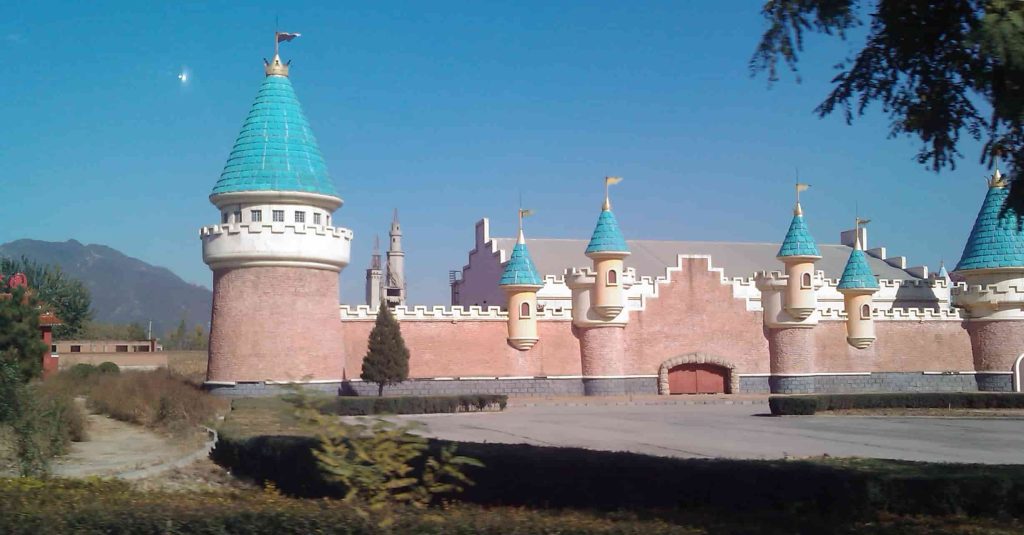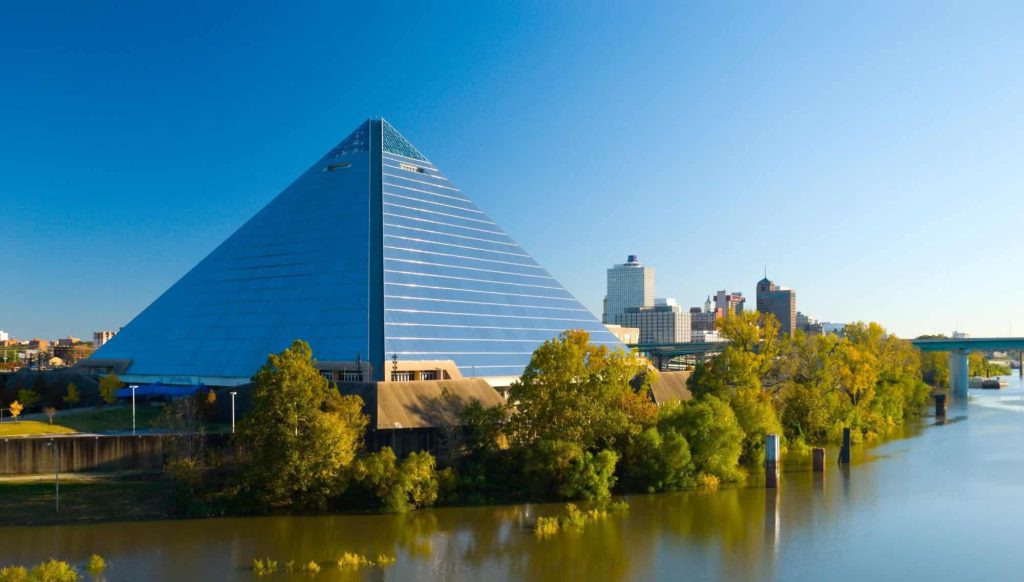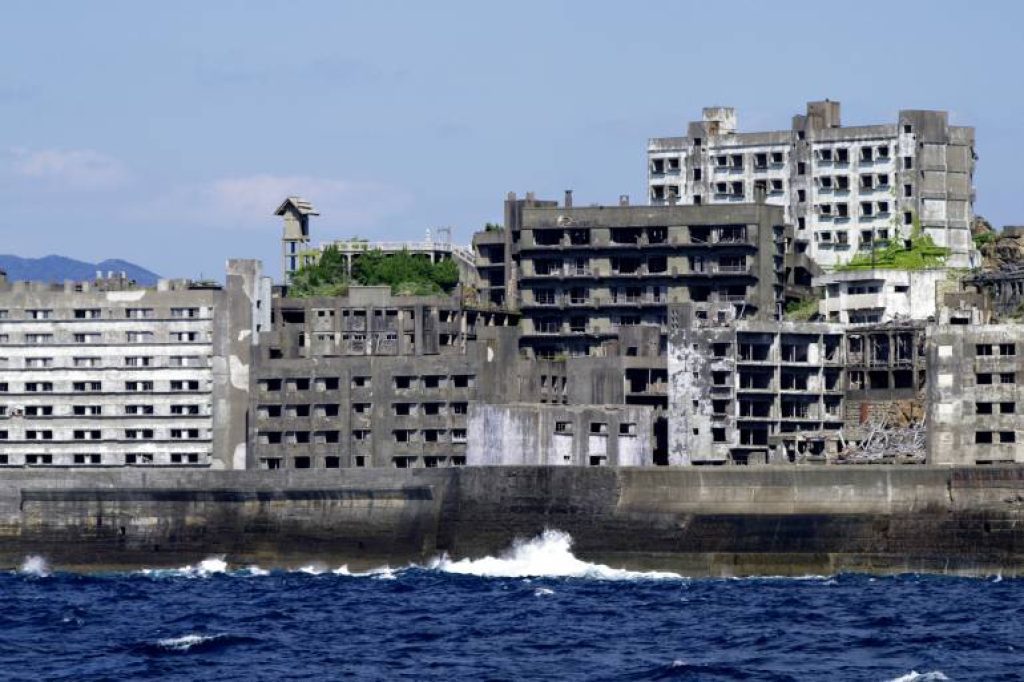
Here are the 3 Biggest Abandoned Megaprojects in the world. From an abandoned Japanese island whose crumbling walls hide a dark and disturbing history to a towering abandoned skyscraper in Venezuela that once housed around 5,000 people.
Top 3 Biggest Abandoned Megaprojects in the World
#1.Wonderland Amusement Park

We start with Wonderland Amusement Park, which is just a 20-minute drive from China’s capital, Beijing. Wonderland Amusement Park was considered to be the largest amusement park in Asia. Plans for this were drawn up in the early 1990s. The park will cover a total area of 50 hectares on an undeveloped corn field. Chinese property developer Reignwood Group hoped that Wonderland would become the company’s flagship project and that the property would attract millions of visitors from nearby megacities. The construction of Wonderland amusement park started in the 1990s.
The site was planned to create a Disneyland-style theme park with the famous castle as its centrepiece and mediaeval-themed buildings and walls surrounding it. Unfortunately, in 1998, halfway through the construction of Wonderland, all work on the site came to an abrupt halt, and the park was closed. Locals started coming up with theories as to why the massive project was suddenly put on hold. Some stories suggested that the park’s location was cursed, while others rumoured that a mass grave was unearthed during construction.
But despite all these rumours, the reality was far more plain and simple. After financial disagreements with the local government and the farmers who were working the area before construction began, the entire project was put on hold. The developers were unable to reach an agreement with the local people on property prices and unfortunately had to abandon the project as negotiations stalled. The project would have uprooted the livelihood of farmers and their families, and they were unwilling to give up their only source of income.
As Reignwood and all his workers hurriedly left the site, the half-built attractions on the property easily fell into disrepair, and nature slowly took over. Over the years, when the site was abandoned, local farmers simply reclaimed the land and began working and cultivating plants again. Against the backdrop of a bleak mediaeval fantasy. An attempt to revive the project was initiated by the developers in 2008, but it ultimately failed again as the built structures were already too dilapidated and beyond repair. Five years later, the surrounding structures were finally demolished, ending any hope of the project being completed.
#2.Memphis Pyramid

Pyramid of Memphis Since the city of Memphis, Tennessee, is named after the historic city of Memphis in Egypt, Mark Hartz created an ambitious plan for his hometown that aimed to replicate its ancient name. The original plan was to build three pyramids, all located on the banks of the Mississippi River, which would be completed to mirror the famous Giza pyramids. All three structures would be built on a scale of two-thirds of their original size and would resemble their Egyptian positions.
Will be exact counterparts The project was conceived in the hope of creating a name for the city of Memphis by creating a landmark that would represent the city to the rest of the world, like the Gateway Arch in St. Louis or the Eiffel Tower in Paris. However, this ambitious project did not materialise until Jon Hartz, son of Mark Hartz, revived the idea in the 1980s. The new proposal eliminated the three-pyramid complex in favour of a central pyramid that would be 98 Metres high and have a base of 180 Metres, making it one of the largest pyramids in the world.
The concept was adopted by Tennessee Construction of what would eventually become the Memphis Pyramid began in September 1989, according to entrepreneur John J. Tigert But even before the building was completed and opened its doors two years later, the Memphis Pyramid was already facing many different problems. Many of the planned facilities to be built in the building were eventually scrapped due to financial difficulties. These included a music museum and a radio station an observation deck, an outdoor theme park, and a Hard Rock Cafe.
So when the Memphis Pyramid opened in 1991, it served as a basketball arena, and the opening was a huge success: the entire building was packed with more than 21,000 visitors. However, on this most important day for the pyramids, the toilets inside the arena backed up and the basement flooded as the city’s sewage transfer system failed to keep up with the number of people. Over the next few years, the Memphis Pyramid would be used for many different purposes and events, such as basketball tournaments, concerts, and even a boxing match between Lennox Lewis and Mike Tyson that became the highest-grossing boxing event in history at the time.
Although the Memphis Pyramid was turning a profit by hosting many different events, it had no permanent tenants to ensure its long-term profitability. So in 2001, the city of Memphis tried to move an NBA team to the city, with the Memphis Pyramid serving as their home arena. The city spent an estimated $7 million to redevelop the facility to become a suitable venue for the Memphis Grizzlies.
But after the Memphis Pyramid served as the home of the Grizzlies for only three years in total, they moved to the newer and more modern FedEx Forum, which opened in 2004, and due to the city’s contract with the Grizzlies, the pyramid could only ever be Used with team approval. It was largely abandoned over the next decade. A committee was even formed to explore possible long-term future uses for the abandoned buildings to turn the pyramid into an indoor theme park, casino, or shopping mall.
The original idea of the pyramid had failed, and it remained empty. But despite being vacant for a long time, there was hope for the Memphis Pyramid. American retailer Bass Pro Shops signed a 55-year lease of the Memphis Pyramid with the city of Memphis to convert it into a large store, so today, the Memphis Pyramid is home to Bass Pro Shops around the world. With an archery and shooting range, and even a laser arcade. Since the makeover, the pyramid’s new tenant has been a huge success in Lokati, with three million people visiting in its first year.
#3.Hashima Island

Hashima Island is a small island located fifteen kilometres south-west of Nagasaki, Japan. At only 500 metres at its longest, Hashima Island seems stuck in time. Home to dozens of concrete buildings, sea walls, and ruins from the 20th century. Almost completely protected by its isolation, Hashima Island is a symbol of Japan’s rapid industrialisation and its dark history hidden behind the walls of this abandoned place. Hashima was first settled in 1887. A substantial amount of subsea coal has been discovered in the area.
Mitsubishi then bought the island and began building a coal mining facility with seawalls that surrounded the entire island and protected it from storms. By 1916, the company had begun building a variety of facilities for the growing number of workers living on the island. They built a 7-story apartment building, a school, a hospital, a community centre, and even entertainment facilities such as a cinema, a swimming pool, and many different shops. In 1959, the island reached its peak population of 5,300 people.
By the late 1960s, however, petroleum had rapidly replaced coal as Japan’s main energy source. This forced the closure of many coal mines across the country, and Hashima‘s coal amenity began to decline, along with its population. After most of the residents left, Mitsubishi officially ceased operations as an island and was gradually abandoned. The island continued to exist as a coal town for the next thirty years, but it was not permanently inhabited. Its industrial-era buildings slowly began to crumble as nature reclaimed the island. By 2002, Mitsubishi had relinquished ownership Of the island and moved it to the town of Takashima and then eventually to the city of Nagasaki.
Hashima Island soon became the subject of curious explorers wanting to uncover the island’s history and its abandoned buildings. So in 2005, access to the island was reopened to journalists by the city of Nagasaki. Only a few years later, the island became accessible to the general public and now serves as a popular tourist destination for those who want to glimpse the architecture of the Taish and Shwa periods. That same year, the Japanese government began efforts to have Hashima Island listed as a UNESCO World Heritage Site, citing the importance of the historical ruins and well-preserved architecture on the island.
However, the move was quickly opposed by the North and South Korean governments, as the island’s dark history was deliberately left out by Japan in its UNESCO application. Unknown to most people, from the 1930s until the end of World War II, Hashmia Island became the home of countless people. Acts of human rights abuses in which Korean and Chinese prisoners of war were forced to work in extremely harsh conditions, a very low estimate of 130 to 1,300 forced labour allegedly caused by exhaustion, malnutrition (he lost his life on the island), and poor working conditions Despite Korea’s opposition to UNESCO Boli, Hashmia Island is now considered a World Heritage Site and attracts thousands of tourists every year.
People Like To Read Also This:
Follow Us: Facebook | Instagram | Twitter | YouTube | Telegram | Google News







